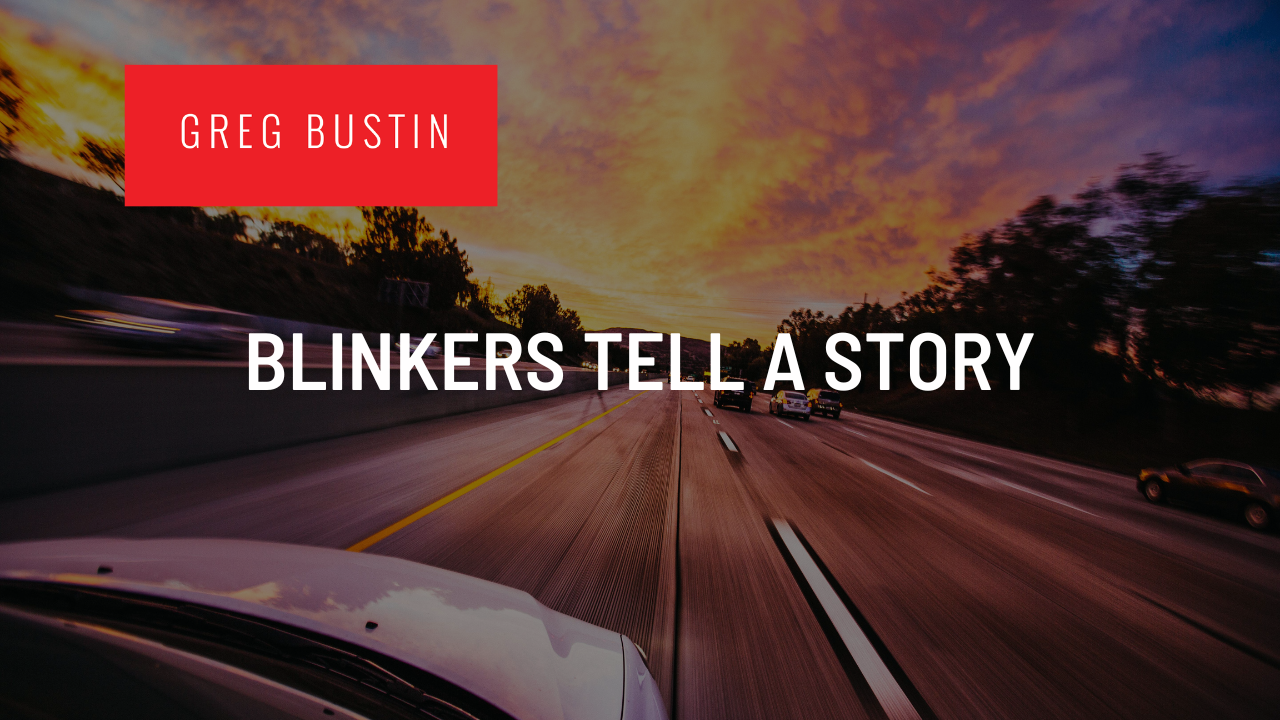
Blinkers Tell a Story
Published in Leadership, Organization Health, Productivity, Strategic PlanningThis article was first published in June 2012. It’s been updated due to its popularity and is being re-posted following our return from Portugal where I’m happy to report we encountered some of the world’s most polite motorists.
Summer’s here.
While people all over the world are hitting the road, auto travel is down.
In the U.S., Memorial Day weekend travel a few days ago hit an 11-year low driven by high fuel prices and overall economic uncertainty. Approximately 39.2 million people traveled 50 miles or more, which was an 8.3 percent increase over 2021, according to the American Automobile Association (AAA).
I travel a lot and I drive a lot. In the course of my speaking career I’ve spoken on five continents and by the end of 2022 I will have delivered more than 600 talks.
Common Courtesy is Uncommon
Maybe I’m more of a curmudgeon or perhaps I’m paying closer attention.
People are less courteous drivers than I remember.
One clue: Drivers are using their turn indicators less than ever. Turn indicators might as well be options on the cars of some drivers. Or are some automobiles simply running low on blinker fluid?
Perhaps you’ve experienced something like this: You’re stopped in a turn lane waiting for an oncoming car to pass only to have the car turn without signaling. Gee, you think, I could’ve made my turn if I’d known the person in the other car was going to slow down and turn.
Offenders cross every demographic. A person driving a Mercedes is just as likely to not signal as a driver in a truck. According to the Society of Automotive Engineers, one in four drivers fails to use a signal when turning.
It’s even worse for younger drivers. Drivers 18 to 24 say they don’t use their turn indicators. Perhaps doing so interferes with talking and texting while driving.
From where I sit, it’s not just a safety issue or a matter of courtesy. It’s also a communications issue.
What’s Your Story?
Because I provide executive coaching and leadership development, I think about how behaviors in one area of a person’s life (driving a car, for instance) might show up in another place (like leading a team at work).
So I believe blinkers tell a story about a person. How a person uses – or doesn’t use – the turn indicators on their car may provide insight into how that person behaves in the workplace. Here are a few scenarios:
- Always uses a blinker – This driver is probably a pretty good communicator at work. The driver is aware that he or she is not the only one on the road. At work, the leader may be in the driver’s seat, but she is aware of the significance of those around her.
- Uses a blinker only when the driver wants help from other drivers – On the road, it’s all about them. I usually don’t use my blinker, but right now I want you to know that I need to get into that lane ahead of you. And if you don’t let me in, I’m going to force my way in anyway. At work, this person may show up as a bully or an inconsistent communicator who generally keeps people in the dark except when he needs something. Courtesy is not part of his DNA – it’s just a technique to be exploited.
- Uses a blinker when the move is already apparent – This person crosses one or two lanes of traffic, comes to a stop at the traffic light and then signals. Yeah, we already figured out you’re going to turn. At work, this person adds little new information to any discussion or initiative, and may chime in with a blinding glimpse of the obvious.
- Keeps the blinker on even when not turning – Well-intentioned but not aware. This behavior, however, keeps people on their toes…at least for a while. At work, such behavior may show up in their ability – or lack of it – to be accountable to themselves and drive accountability on their team.
- Never uses a blinker – Are they oblivious or rude? They don’t know and they don’t care. At work, they’re either uncertain or out of touch.
Accountability is a hot topic for the leaders I work with, and communications plays a huge role in driving accountability.
Over the last 10 years, I’ve collected data from more than 10,000 CEOs, owners, presidents, partners and key executives worldwide. In my book – Accountability: The Key to Driving a High-Performance Culture – a whopping 69% say they can do a better job when it comes to communicating.
Clarity Creates Confidence
A leader who fails to communicate expectations has him or herself to blame for lack of accountability.
Clarity creates confidence. Confusion causes chaos.
So while few solutions are ever as simple as one, two, three, consider these steps for driving accountability in your organization:
- Be clear about what you want…and what you don’t want. As crucial as it is to know what you want for your organization, your business unit, your department and yourself, be just as clear about what you don’t want. People waste lots of time chasing shiny objects that are off strategy or that are not priorities.
- Tell a story. Most people prefer an engaging story to a stack of statistics. Help your team understand the purpose behind the plan, the definition of success, and the role each plays. Give them something to aspire to achieve that matters to them and to the organization.
- Use different forms of communication. Some people need to see information, some need to hear it. Some want just the facts, others may need information dished up with humor. Vary the style but not the substance.
- Repeat often. Just because you say something once doesn’t mean people heard you. Tell your story again and again. And again. And be consistent. Just when you’re sick of saying something is about the time your team is starting to get it.
- Track progress. Winners love to be measured. Losers don’t. Tracking performance is another form of communication.
- Be authentic. When you communicate, find the style that fits you. Don’t try to be someone you’re not. People see through fakes. “Be yourself,” said Oscar Wilde. “Everyone else is already taken.”
- Celebrate victories. Whether they’re small or large successes, communicate milestones, applaud individual and team accomplishments and bask – at least for a little bit – in the fulfillment of a job well done.
Container Store founder Kip Tindell says, “Communication and leadership are the same thing.”
What story does your blinker tell?
How are you doing at driving accountability in your organization?
Ready to reset?
Attend my free Accountability webinar: I Did It! to set and achieve your 2021 goals.
- February 17th from 11 AM – 12:30 PM Central Time
- My free webinar will help you:
– Sharpen your personal goals
– Improve time management
– Tackle tough work-related issues
– Support remote workers
Learn More
To dive even deeper into the topic of accountability, I invite you to purchase a copy of my bestselling book, “Accountability: The Key to Driving a High-Performance Culture.”
Become a better leader.
Download my three free e-books.
Free Tips
Sign up to receive free tips on business, leadership, and life.
Get My Latest Book
HOW LEADERS DECIDE
History has much to offer today’s current and aspiring leaders.
Business schools teach case studies. Hollywood blockbusters are inspired by true events.
Exceptional leaders are students of history. Decision-making comes with the territory.



